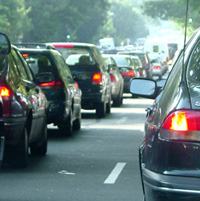NSU Newsroom
SharkBytes
Horizons
This version of NSU News has been archived as of February 28, 2019. To search through archived articles, visit nova.edu/search. To access the new version of NSU News, visit news.nova.edu.
This version of SharkBytes has been archived as of February 28, 2019. To search through archived articles, visit nova.edu/search. To access the new version of SharkBytes, visit sharkbytes.nova.edu.
Other NSU News Sources
News Releases Archive
Contact
Division of Public Relations and Marketing Communications
Nova Southeastern University
3301 College Avenue
Fort Lauderdale, Florida 33314-7796
SharkBytes Archives
SharkBytes Categories
- Academics
- Alvin Sherman Library
- Athletics
- Campaign Corner
- Community News
- Featured Center Stories
- News and Upcoming Events
- NSU Achievements
- NSU Alumni Spotlight
- NSU Art Museum Fort Lauderdale
- NSU Camps
- NSU Health Care Centers
- NSU Research Spotlight
- Nutrition Tips
- Looking Ahead
- Pride Bites
- Recreation and Wellness
- Regional Campuses
- Staying Green
- Student Affairs
- University School
Contact
Division of Public Relations and Marketing Communications
Nova Southeastern University
3301 College Avenue
Fort Lauderdale, Florida 33314-7796
Tips for Travel and Commuting
Commuting
It’s summertime, which means that weather conditions are favorable for ground-level ozone formation. Emissions from motor vehicles are the primary source of ozone-causing pollutants, accounting for almost half of our air pollution. Because heat and sunlight are important factors in ozone formation, ozone pollution generally peaks during the months of April through October, on hot, sunny days with little or no wind and no precipitation.
source of ozone-causing pollutants, accounting for almost half of our air pollution. Because heat and sunlight are important factors in ozone formation, ozone pollution generally peaks during the months of April through October, on hot, sunny days with little or no wind and no precipitation.
On these days, it’s particularly important to reduce how much you drive. Travel to work by taking public transportation, share a ride, walk or bike. Encourage your employer to become part of Best Workplaces for Commuters, a recognition and partnership program sponsored by the U.S. Department of Transportation that encourages employers to offer their employees an outstanding level of commuter benefits such as tax-free transit passes, vanpool benefits, or telecommuting. If you want to know how your organization can participate, email the program, call the Best Workplaces Hotline at 1-888-856-3131, or visit the Best Workplaces for Commuters Web site at http://www.bwc.gov.
Green Vehicle Guide Smog is at its highest levels during the summer. Tailpipe emissions from cars and trucks account for almost half of the air pollution in the United States. You may be surprised to know that you have cleaner more fuel-efficient choices in any vehicle size you need, even an SUV. Find out for yourself. Go to the Green Vehicle Guide to find the cleanest, most fuel efficient vehicle that meets your needs.
Fuel Economy To save gasoline and money during those long vacation trips, keep your car tuned, your tires properly inflated, and drive carefully. See the fuel economy estimates for all cars and light trucks going back to 1985 at http://www.fueleconomy.gov/.
Refueling your vehicle Gasoline vapors are harmful to you and the environment. Not only are they toxic to breathe, they contribute to ozone formation in the atmosphere. Since gasoline vapor production increases during the hot summer months, it is important to be careful when refueling your vehicle. Here are some simple measures you can take at the gas station:
- Secure the gas cap after refueling to prevent vapors from escaping.
- Avoid refueling on ozone action days.
- If you must refuel on ozone action days do so in the early morning or evening.
Maintaining Your Vehicle – Watch your dashboard light to prevent pollution This summer, help prevent pollution by keeping your car in tip-top shape. If your car or light truck is a 1996 or later model, it is equipped with a sophisticated computer called the “Onboard Diagnostic” (or OBD) system that helps your engine to operate at peak efficiency and will alert you to any potential problems that could cause it to work harder, wear out faster and pollute more. If the OBD system detects problems, it will trigger a “Check Engine” light. Repair shops are able to check the computer to see precisely what is causing the problem, and can then make effective repairs.
During your summer vacation trips, if your “Check Engine” light comes on and stays on, don’t panic. You and your car are not in immediate danger. The first thing you should do is check that your fuel cap is secured tightly: loose gas caps cause gasoline vapor emissions which trigger the light. If the cap is tight and the light still stays on, try to arrange for service when convenient. If the light is flashing on and off, this indicates engine misfire, a condition that can harm the engine. In this case, you can still drive safely but you should minimize your time on the road and avoid driving at high speed or carrying excess weight such as towing or carrying heavy equipment.
Making sure you service your vehicle whenever the Check Engine light is illuminated can help you:
- Prevent more costly repairs.
- Improve your vehicle’s fuel economy.
- Ensure that your vehicle is ready to pass an emissions inspection.
- Reduce emissions of harmful air pollutants.